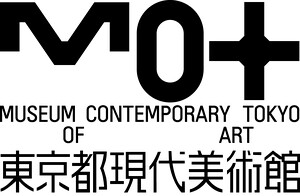A for Agents
April 6–July 7, 2024
4-1-1 Miyoshi
Koto-ku
Tokyo 135-0022
Japan
Hours: Tuesday–Sunday 10am–6pm
T +81 3 5245 1134
mot-pr@mot-art.jp
Museum of Contemporary Art Tokyo presents A for Agents, a solo exhibition of Singaporean artist Ho Tzu Nyen. This large-scale exhibition traces the trajectory of Ho’s practice over the past two decades, with a special focus on the various agents from history—both human and nonhuman—and the primary vehicle of our life: time.
Time not only takes on various shapes in Ho’s works, but it also interrupts the form of the exhibition. The gallery spaces are continually alternating between different sets of works—like an agent with multiple identities.
Although moving image is Ho’s prime visual language, he has produced a wide range of artistic work, including installations, theater performances, and VR (virtual reality); all of which traverse the historical events, political ideologies, and cultural identities of Southeast Asia and beyond. Drawing from existing material, rearranged into dazzling entanglements of image, sound, and text, Ho renders the complexities of geopolitical dynamics and subjectivities palpable, while posing questions on the power structures that constitute identity, history, and political units such as the nation-state or the region.
The earliest work in the exhibition is Utama—Every Name in History is I (2003), a video installation that challenges the modern narrative of Singapore’s foundations by tracing its precolonial origin to the voyaging prince Sang Nila Utama, who named the land “Singapura” (Lion City, in Sanskrit). Singapore’s past also features in Ho’s One or Several Tigers (2017). Here, 3D-animations of a Malay tiger and a human stage historical instances of the ruler and the subjugated, showing them to be interchangeable states, as seen in the encounter between a tiger and the road surveyor George D. Coleman, who served the British colonial administration in the nineteenth century.
A pair of works in the exhibition, The Nameless (2015) and The Name (2015–17), use existing film footage to speculate on the identities of two enigmatic individuals from Malaya’s tumultuous political past. The Nameless sheds light on Secretary-General of the Communist Party of Malaya, Lai Teck, who is said to have operated as an agent for the British, French, as well as the Japanese from the early to mid-twentieth century, while The Name considers the elusive author behind critical accounts of the Malayan Communist Party based on highly classified information, Gene Z. Hanrahan.
Ho’s online platform CDOSEA (2017–ongoing), a part of his project The Critical Dictionary of Southeast Asia (2012–ongoing), serves as a matrix for his art productions. This glossary of A to Z terms is notated by a voice performer and imagery sourced from the internet by an algorithm. Each time a term is accessed, it is rendered anew. The work generates resonances and differences in meaning, while positing the question, “What is Southeast Asia?”
Among his works produced in Japan over recent years, Voice of Void (2021) is on show. Consisting of VR and multiple two-channel videos, the work restages the conversations, speeches, and texts of the philosophers of the Kyoto School, who advocated for overcoming Western modernity and speculated on the value in establishing the Greater East Asia Co-Prosperity Sphere. The work invites us to navigate across different time-spaces and become immersed in discussions among members of the Kyoto School, such as on the ethics of Japanese military ventures, the question of sacrificing one’s life for the nation, or founder Kitaro Nishida’s idea of “absolute nothingness.”
Ho’s most recent works, T for Time (2023) and T for Time: Timepieces (2023), will also be on show for the very first time in Japan. The forty-two parts of Timepieces are dispersed across the gallery, each embodying a different symbol and nature of time, while T for Time uses an algorithmic editing system to generate sequences of sampled footage and texts, animating various aspects and scales of time and evoking a multitude of meanings, sensations, and narratives.
Organized by Museum of Contemporary Art Tokyo.
Curated by Kyongfa Che, Curator of Museum of Contemporary Art Tokyo.








